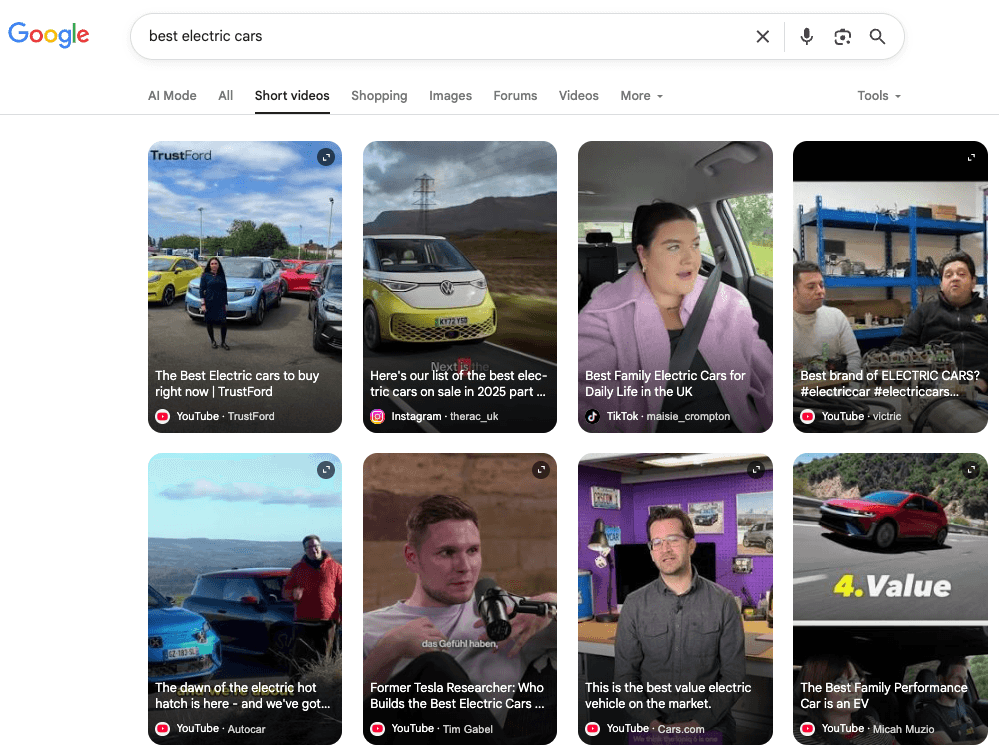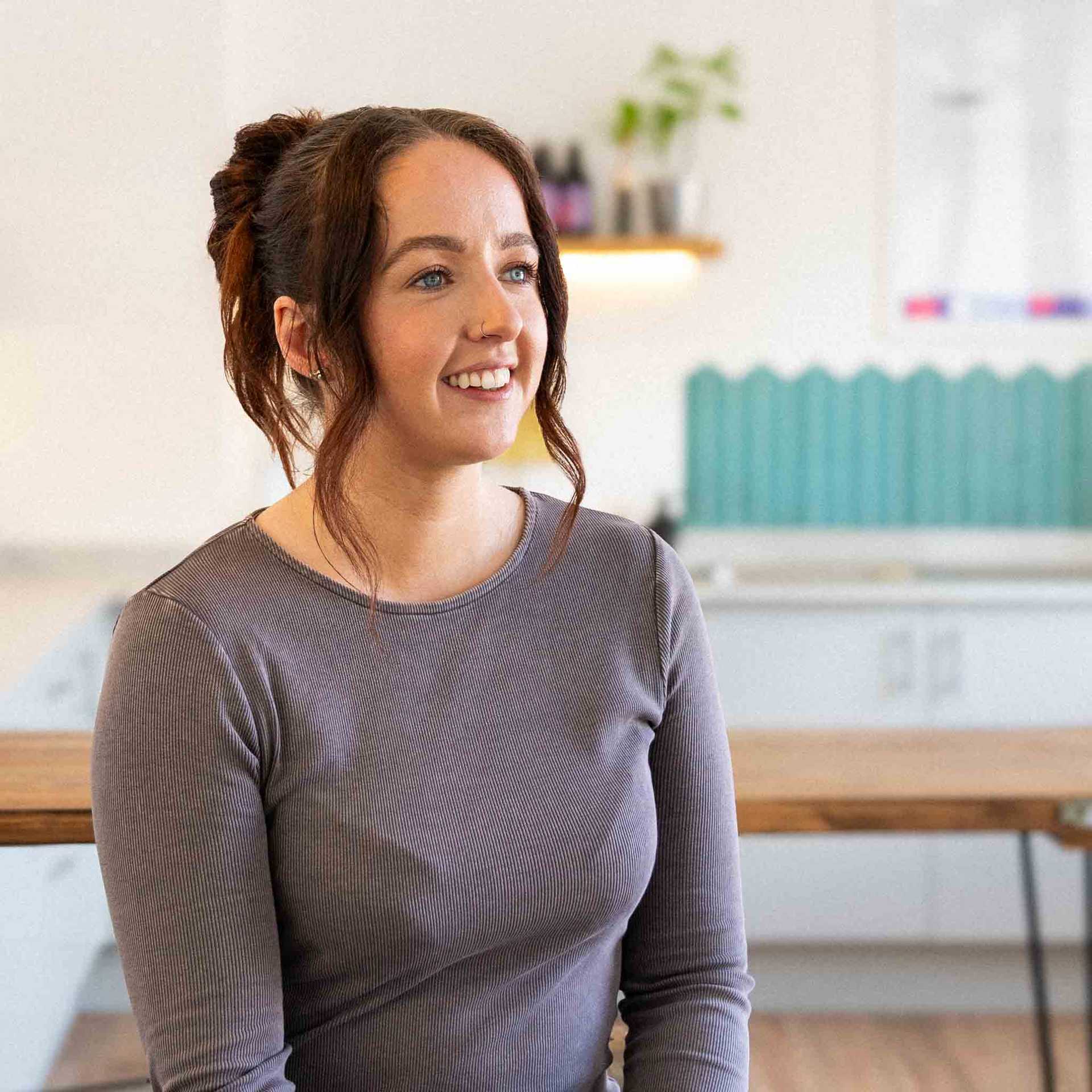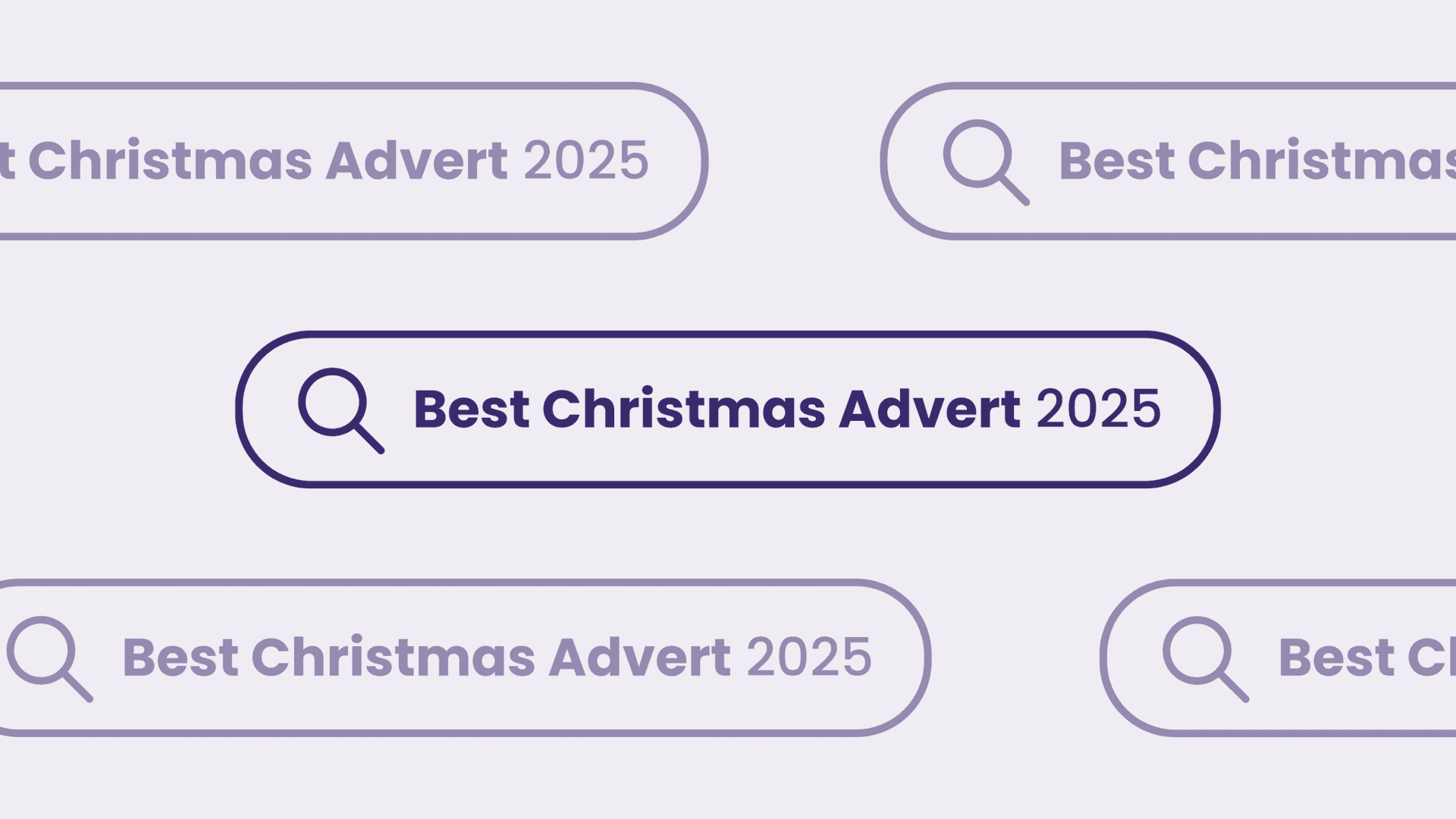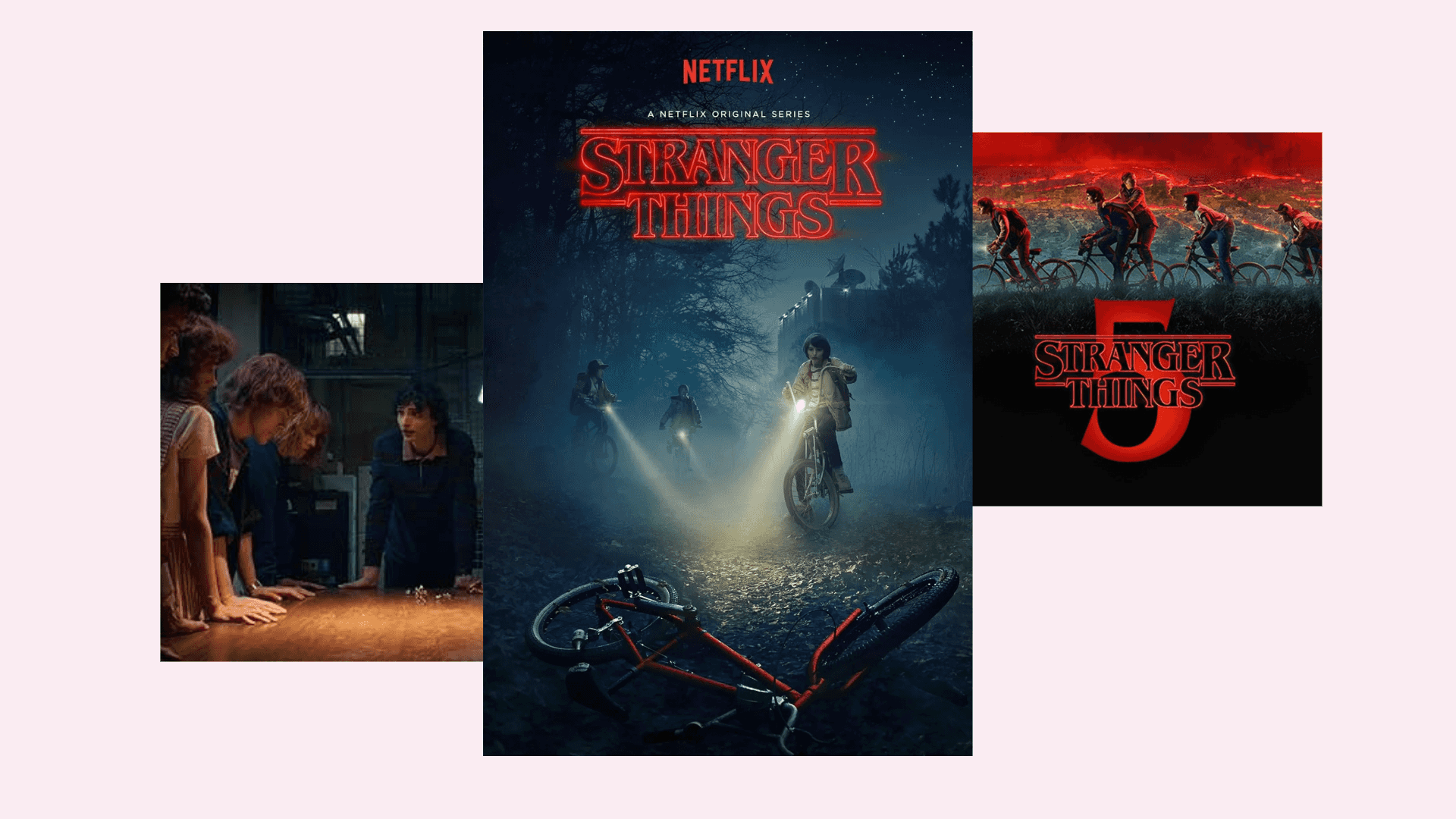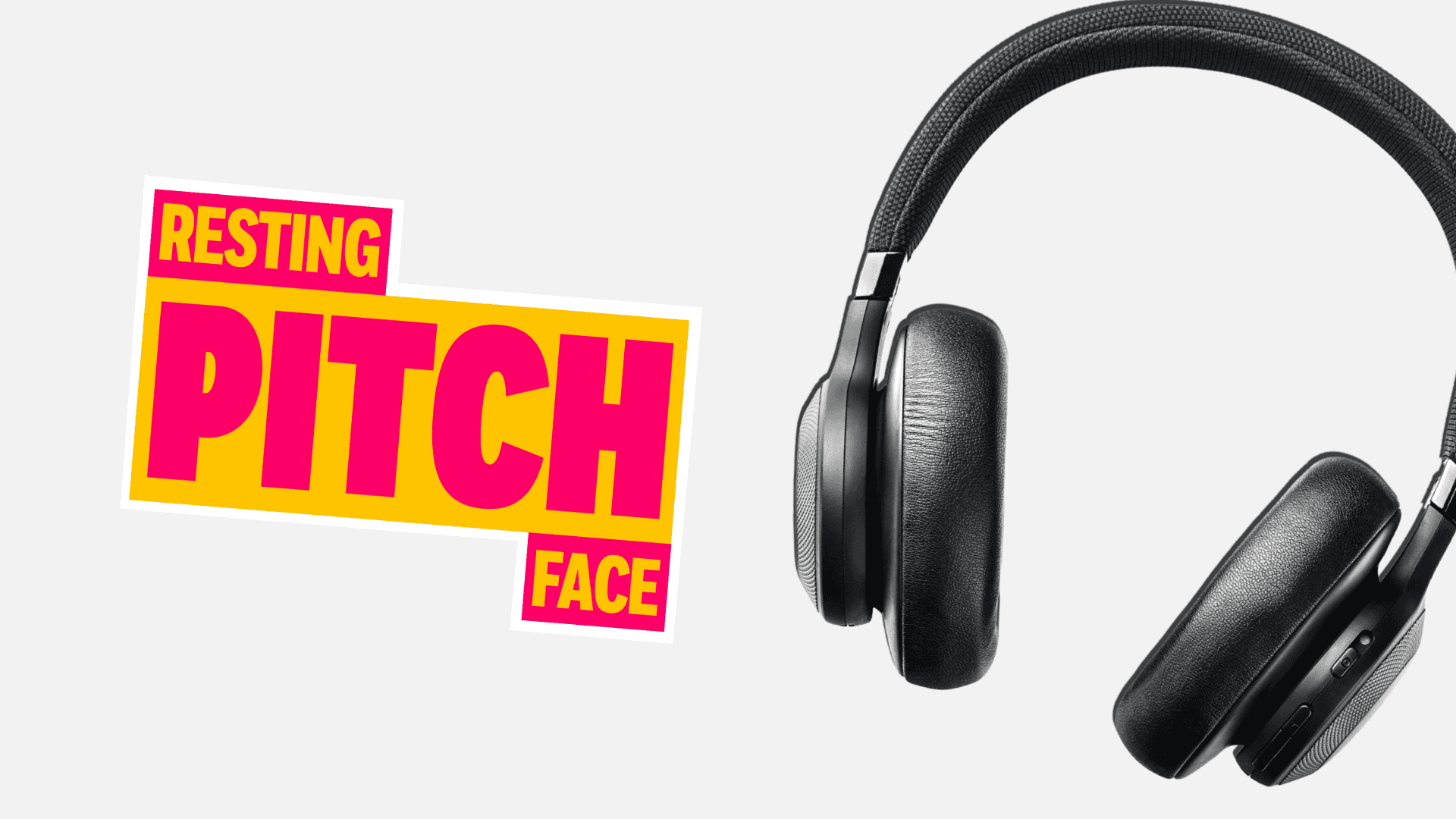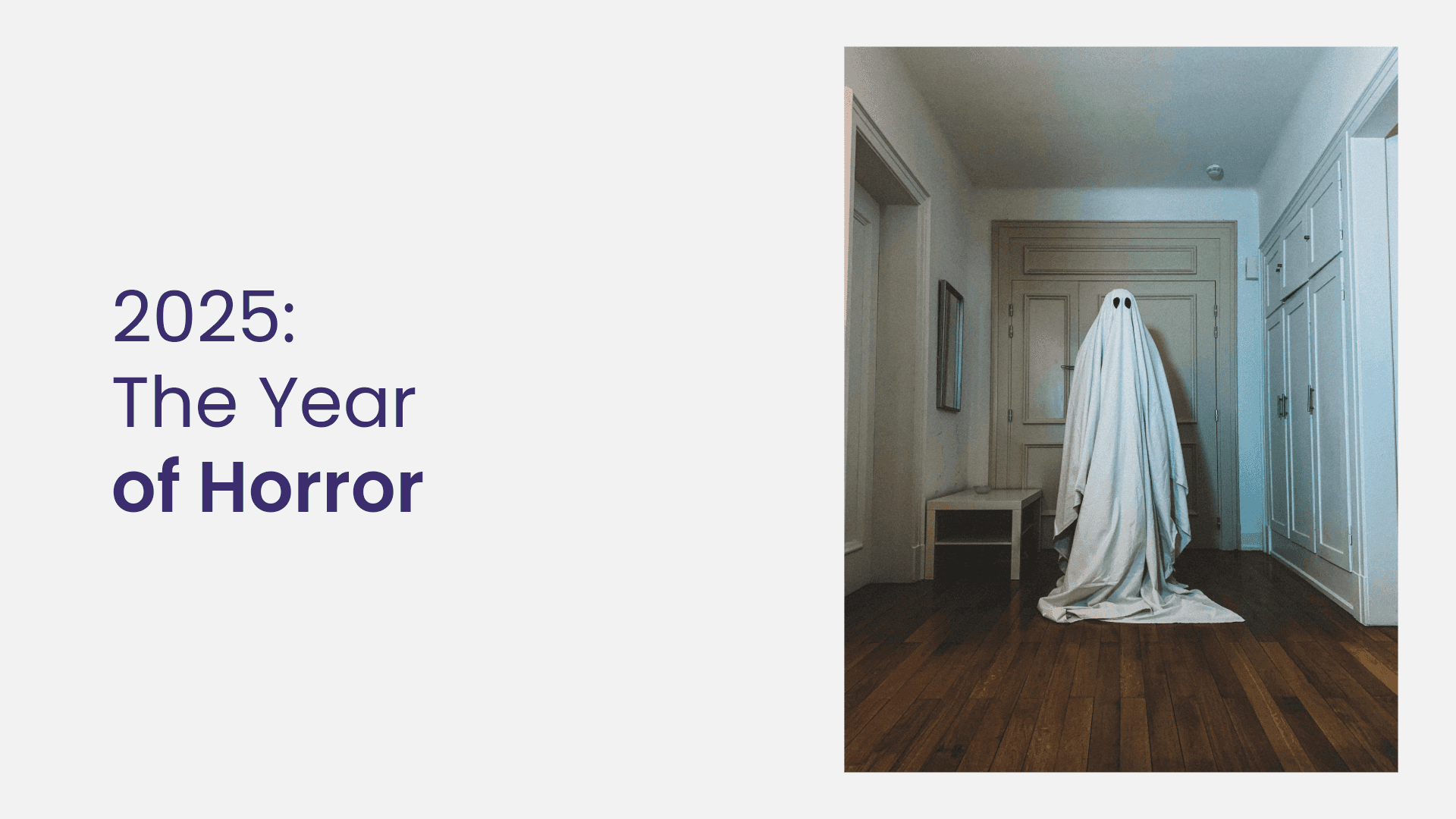That’s it. If you tick those boxes, your content can show up, giving you long-term visibility that Search usually doesn’t.
Search for ‘best electric cars’ or ‘how to style a trench coat’ right now. You’ll see it. Google is already pulling short videos and other native content directly into the SERPs, meaning your brand’s Instagram content can compete for these valuable slots.
Yes, Instagram posts have occasionally popped up in search before, but the difference now is consistency. Search engines are officially allowed in, and that matters.
